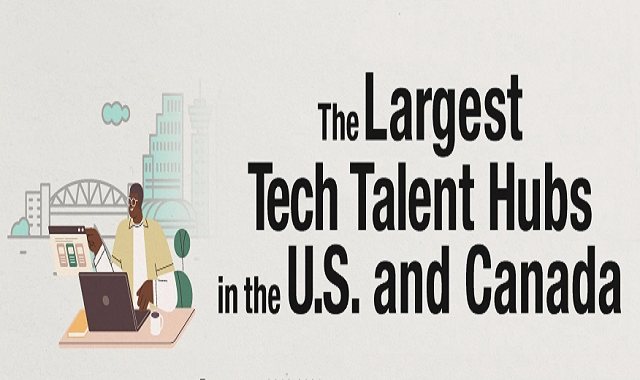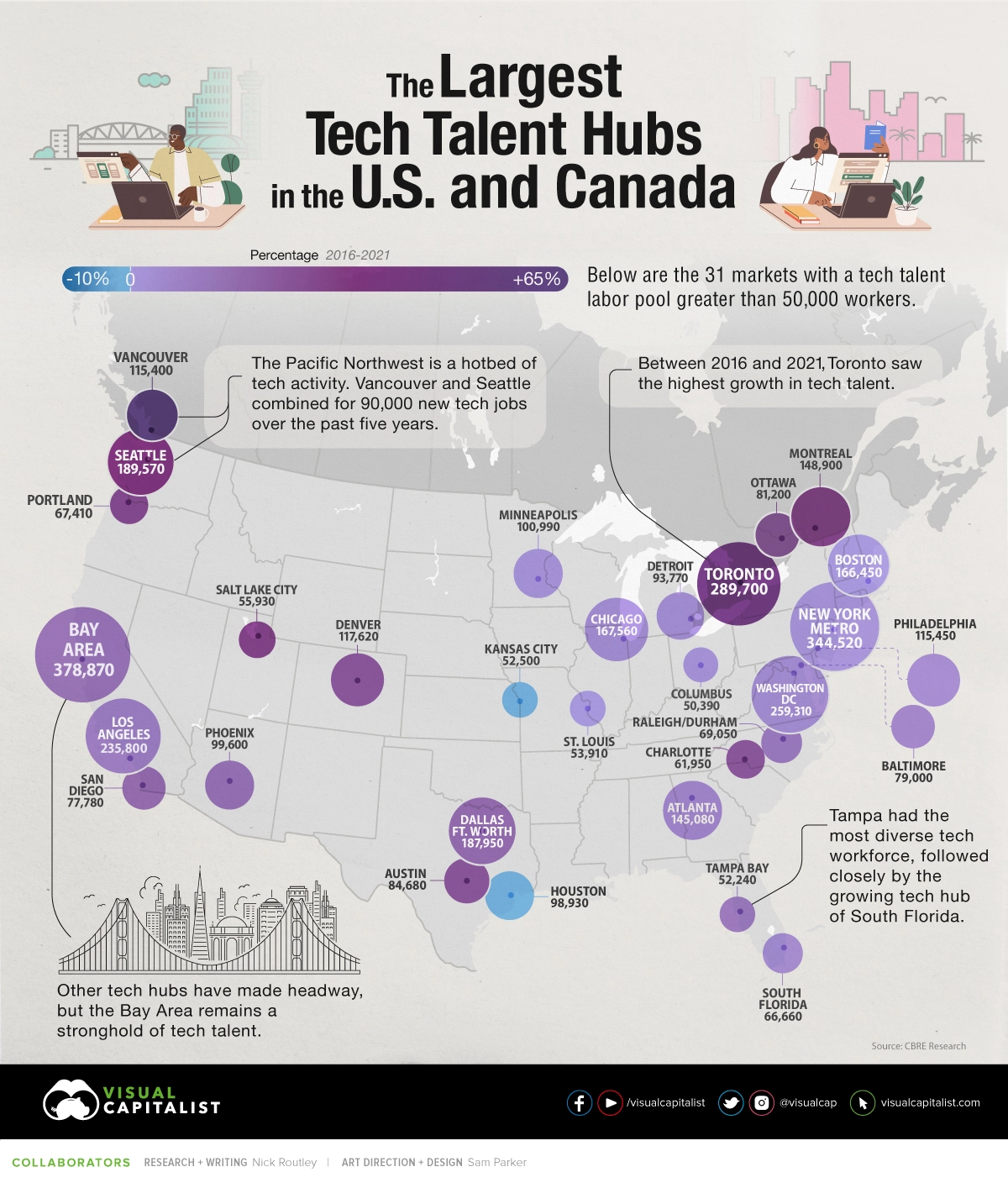The estimated number of tech workers between the U.S. and
Canada is 6.5 million, out of which 5.5 million work in the United States
alone. The tech workforce keeps growing in these regions.
This infographic contains information taken from a report by
CBRE to analyze which of the tech talent markets are the biggest in the United
States and Canada. The data not just looks at the total workforce in the
sector, but also shows change in tech worker population
over time in various cities.
The report also categorizes the metro areas and regions that
can truly be considered tech hubs. The factors that are focused for this
purpose include: average educational attainment, cost of living, and tech
employment levels as a share of different industries.
The Top Tech Hubs in the U.S.
The most prominent and expensive talent hub in the U.S. is Silicon
Valley, in California’s Bay Area with a talent pool of nearly 380,000 tech
workers.
The large, coastal cities of America still contain the
lion’s share of tech talent. New York Metro, Washington D.C. and Los Angeles though
have huge number of tech talent hubs, but the percentage of talent growth is low
which is 3%, 6% and 10% respectively.
The mid-sized tech hubs like Portland, Denver, and Salt Lake
City have put up strong growth numbers in recent years. The home to Amazon and Microsoft,
Seattle, showed a remarkable 32% growth rate over the last five years. The entire
state of North Carolina is developing as an increasingly attractive business
hub. With this percentage of growth in different cities of the U.S., Houston is the
only city on the list that had a negative growth rate at -2%.
The Top Tech Hubs in Canada
Technology giants such as Meta, Google and Amazon are making
continuous efforts to grow their presence in Canada. Canada’s four tech hubs
with a total worker population of more than 50,000 are Toronto, Montreal, Vancouver
and Ottawa.
Toronto had the most absolute growth in tech positions in
2021, adding 88,900 jobs. The technology sector in Canada’s largest city has
seen a lot of energy in current years, and is now ranked by CBRE as North
America’s number 3 tech hub, after the SF Bay Area and New York City.
Vancouver’s tech talent population grew the most from the
original figure, ascending up to 63%. Giant companies like Microsoft and Amazon
have established large offices in the city, which has added to the already
thriving tech scene. Furthermore, Google is set to build a submarine high-speed
fiber optic cable connecting Canada to Asia, with a terminus in Vancouver.
Ottawa has also taken some recognizable steps to increase
their tech talent and imprint their presence. The country’s capital even has
the highest concentration of tech employment in its workforce, thanks in part
to the success of Shopify.
Six out of the top 10 cities by tech workforce concentration
are located in Canada.
Growth of Tech Hubs
This era after the Covid-19 pandemic has new definition of
what a tech hub means. It is clear now that remote work will persist because
workers migrate in search of comfort and affordability. Due to this reason tech
hubs have to see decline or slower growth in their number of tech workers.
The question is that more workers with great talent,
education and resources continue to choose cost-friendly places to live and
work remotely, will newer markets like Charlotte, Tennessee, and Calgary see a
rise of tech companies, or will large corporations and startups alike continue
to opt for the larger cities on the coast?
Infographic by: visualcapitalist


